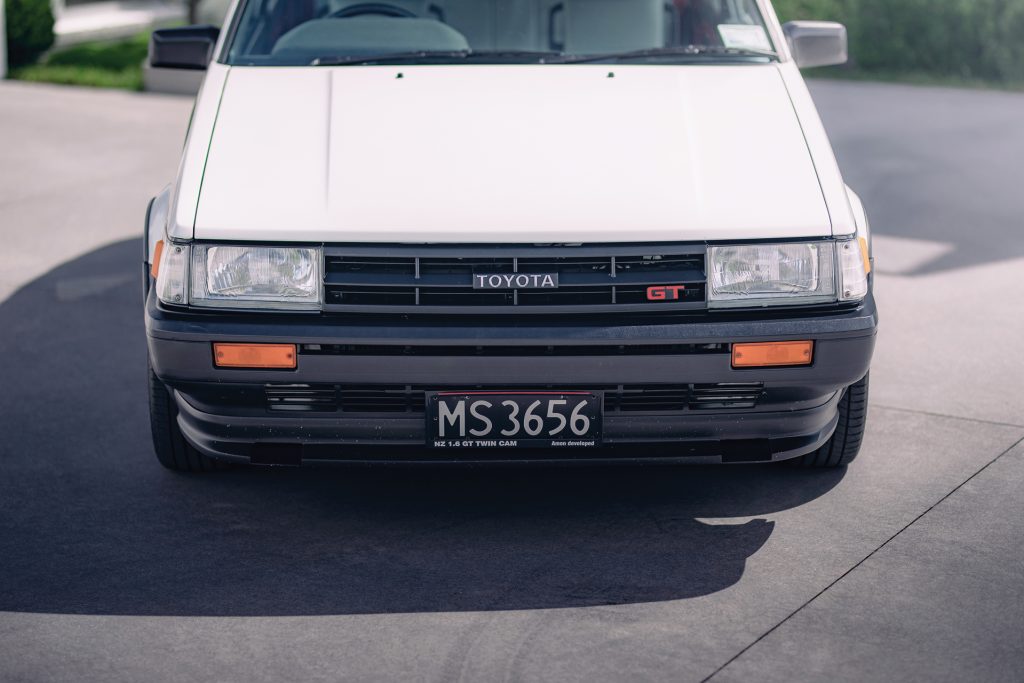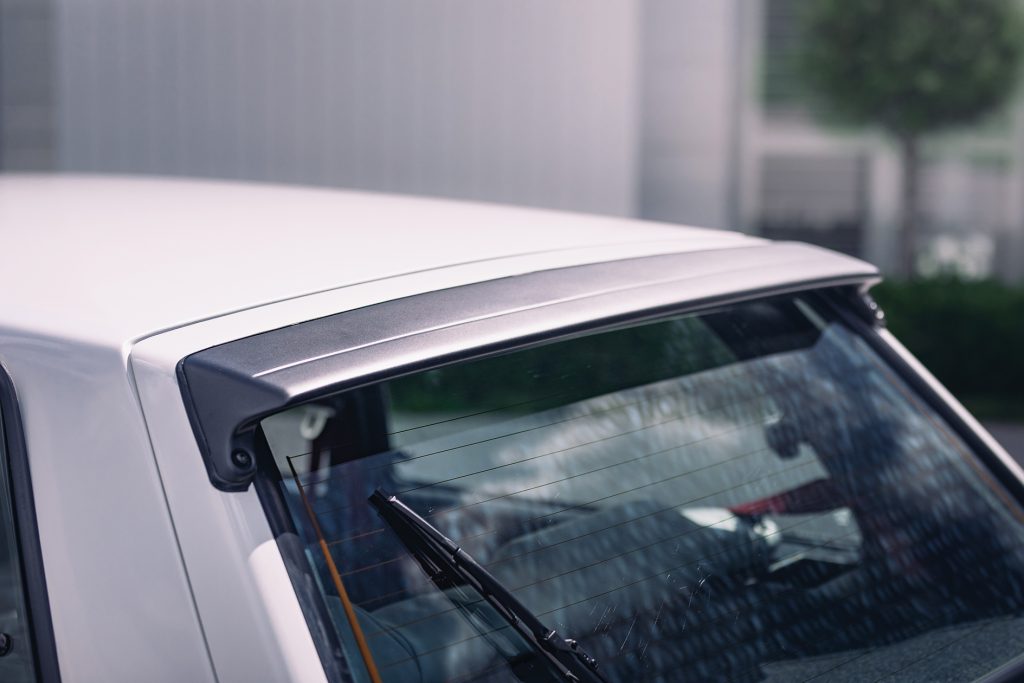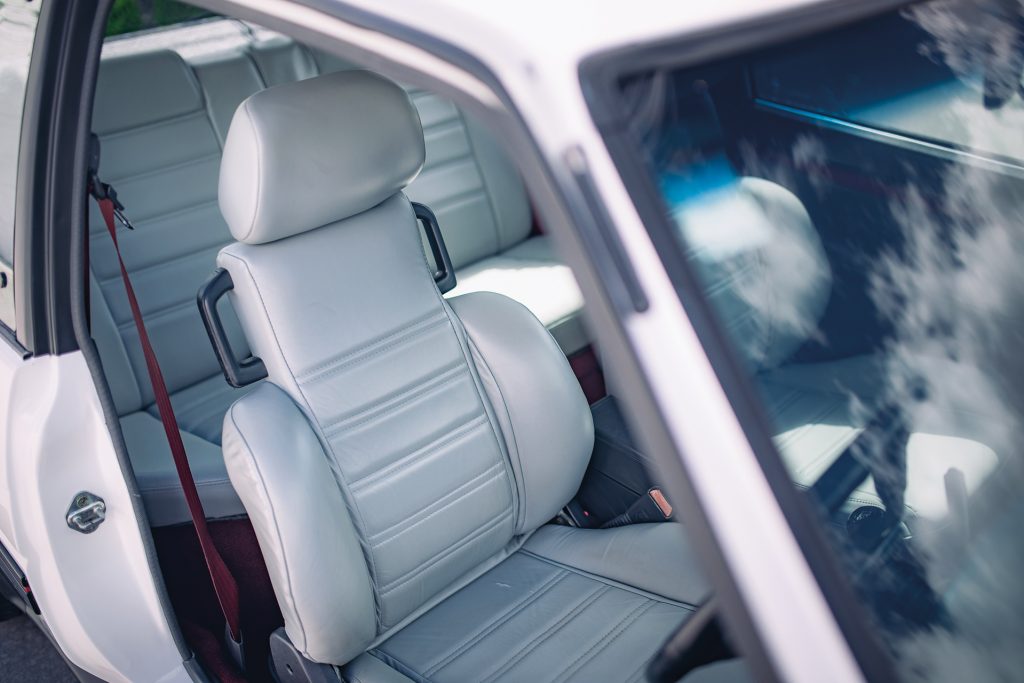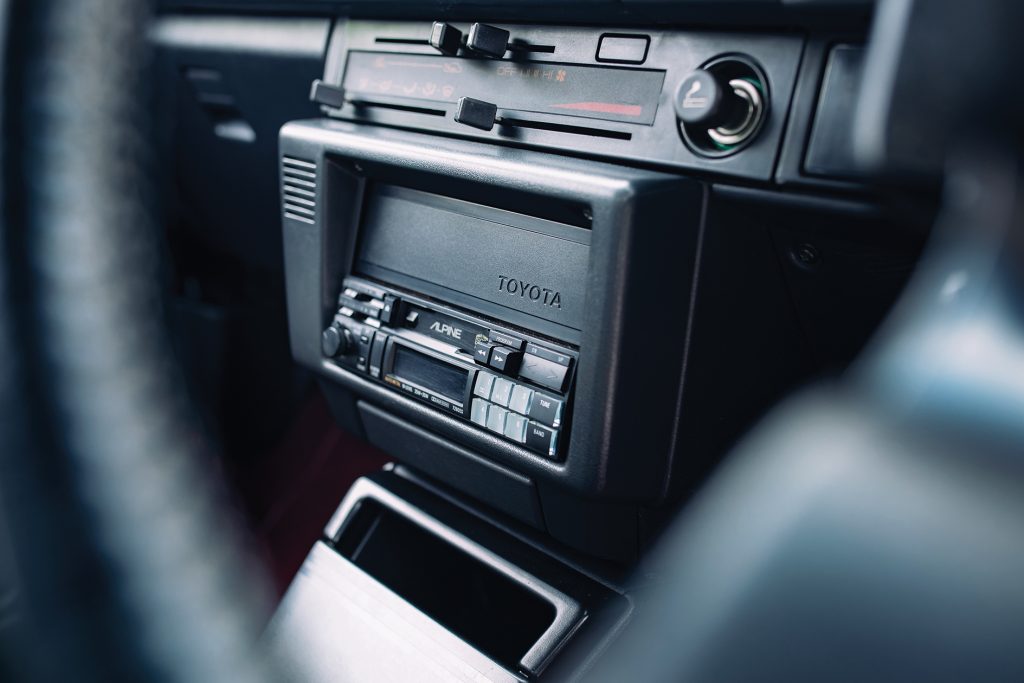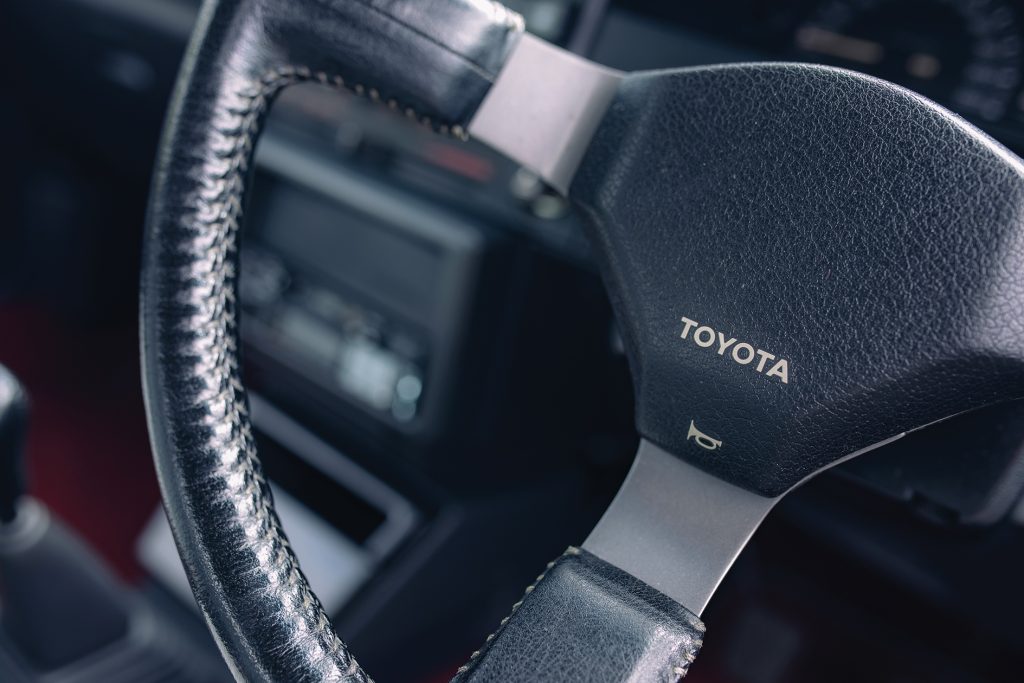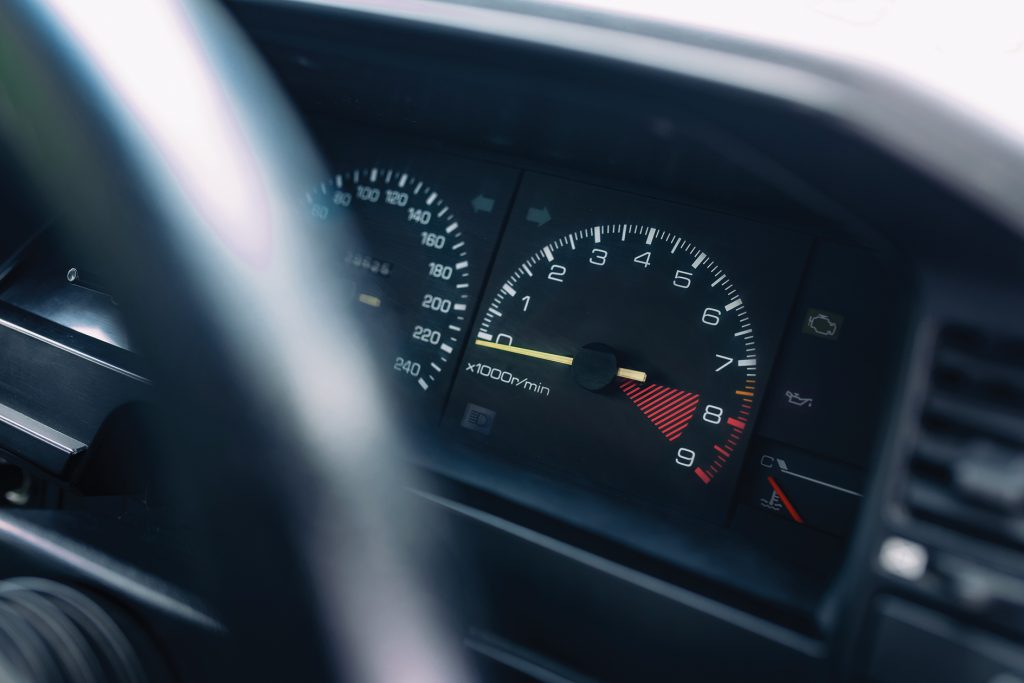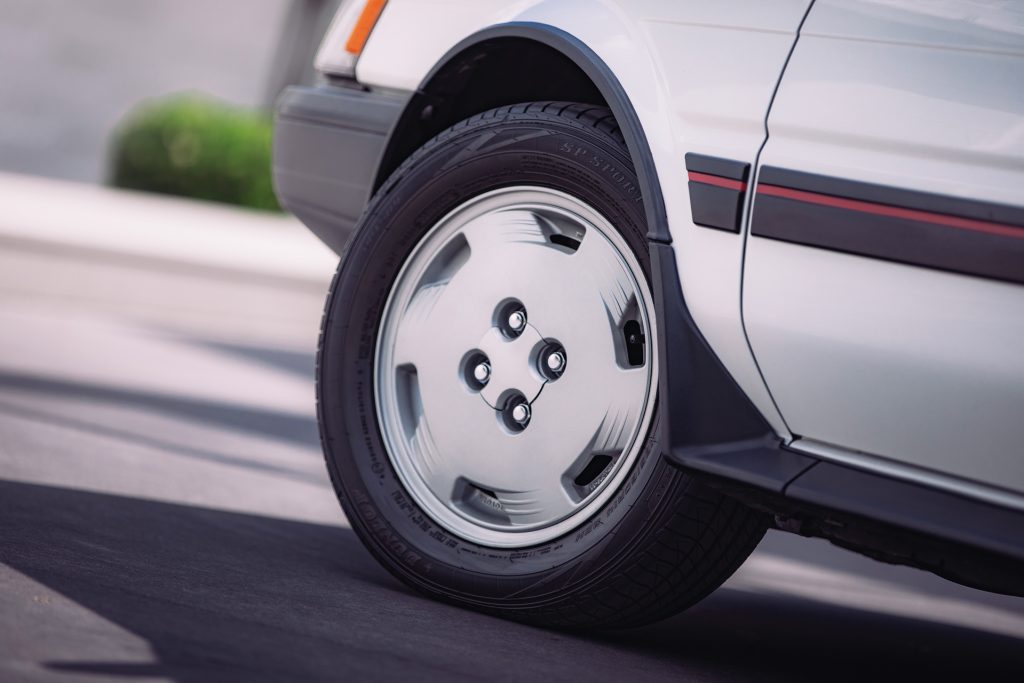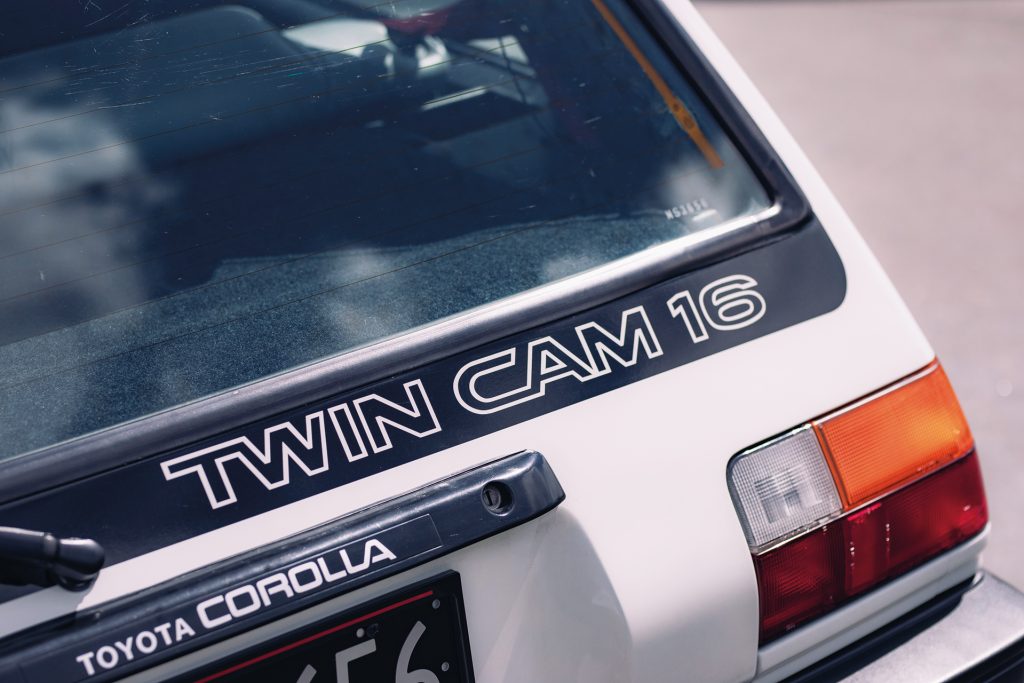1986 Toyota Corolla GT
Words: Richard Opie | Photos: RO
The hot-hatch revolution never really kicked off here like it did in Europe. Nonetheless, TNZ developed the ripper little Corolla GT, ensuring Kiwi’s had their own slice of hot-hatch heaven.
As the 1980s dawned, the notion of performance motoring being exclusive to sports cars and GTs had largely evaporated. A few years earlier, a new segment had formed specifically targeting the driver who wanted thrills at a lower cost, married with a dash of practicality for the every day.
Kicked off by the likes of Renault, with their 5 Alpine, and Volkswagen’s GTi, these were the original ‘hot hatches.’ They were imbued with engaging dynamics and willing power plants. Above all, they offered cheap performance.
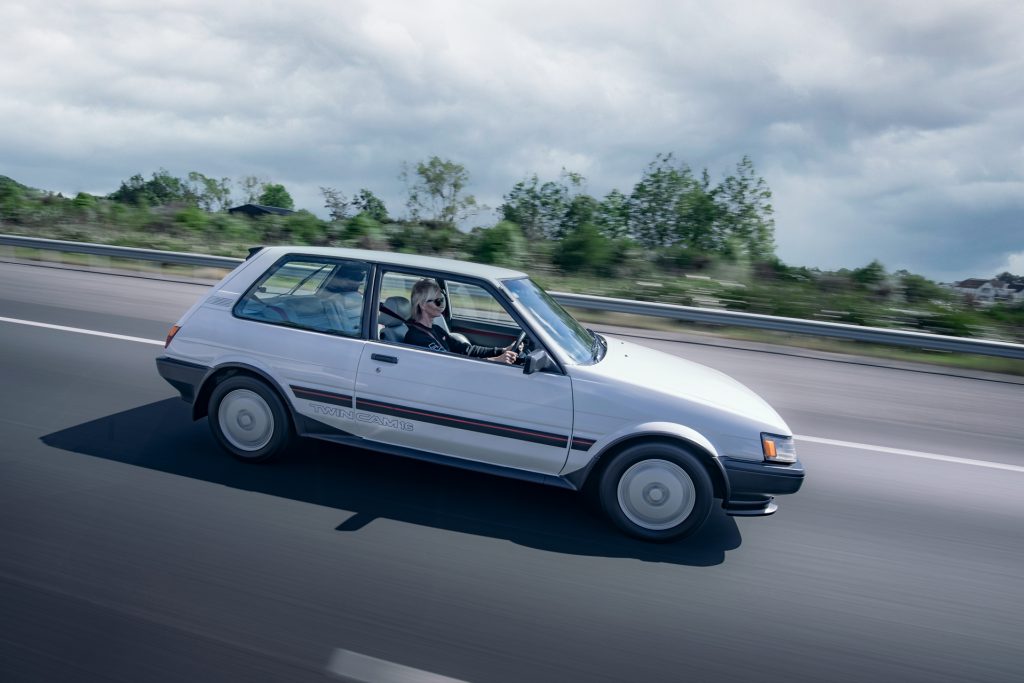
But in New Zealand, with all of our heavy tariffs on imported cars to protect the local assembly industry, the hot hatch movement never really took off. Instead, names like Peugeot, Alfa Romeo and Volkswagen remained luxury focused thanks to their price tags. Local assembly was slow to offer consumers an affordable performance vehicle.
The first-generation Ford Laser Sport (KA) might be considered an early iteration of the hot hatch with its 59kW 1.5-litre SOHC twin-carb lump. But it would be Toyota New Zealand (TNZ) who produced the first “proper” hot hatch for the Kiwi market, in the form of the AE82 Corolla GT.
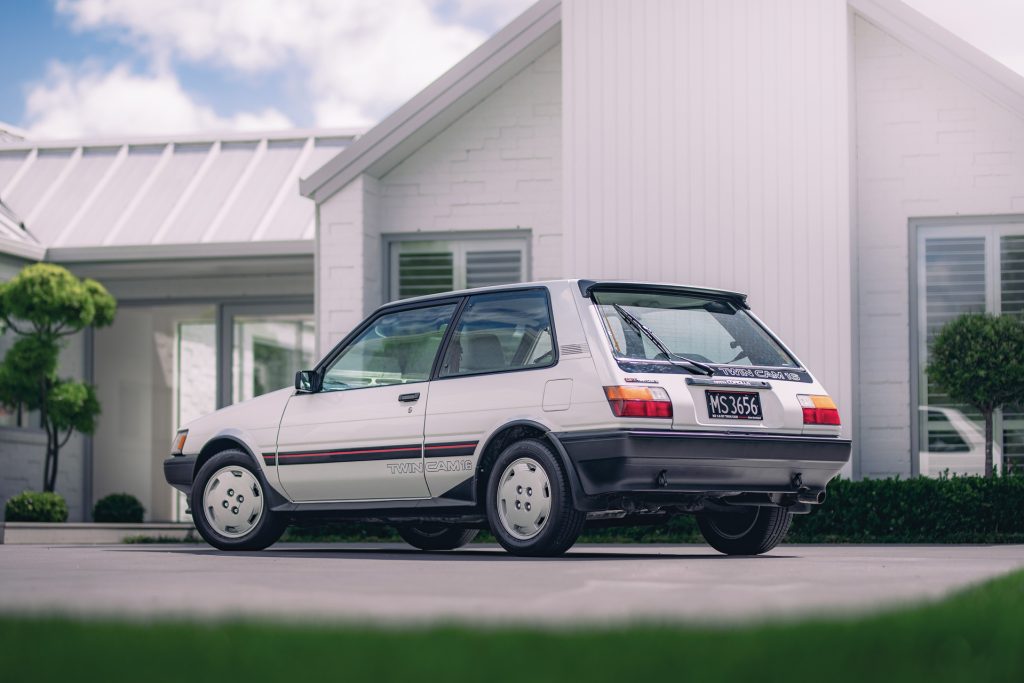
Replacing the E70-series Corolla, the E80 platform represented the transition of Toyota’s popular small car to a front-wheel drive layout. Locally, production began late in 1983 with the “cooking” versions of the car (XL and GL) debuting in showrooms early in 1984. They were available in both four-door sedan and liftback versions, with a couple of engine and trim level choices. Ironically the Corolla would displace the Ford Laser as New Zealand’s top selling car as 1985 dawned. And that also saw the introduction of a special, high-performance variant.
Performance Corollas weren’t unheard of back then. At the time, Toyota had the future cult-classic AE86 in the fray, bringing its E70-derived RWD platform to the party, fronted by the 4A-GE engine, a lively fuel-injected twin-cam 1600cc unit. In Japan meanwhile, that same 4A-GE had been installed sideways under the bonnet of the AE82 Corolla hatchback. With some sporty trim and aero accoutrements it was marketed as the FX-GT. And it enjoyed success in the showroom while it also managed to develop some Group A racing pedigree.
For Kiwis, an imported FX-GT would have been pricey because of the tariffs. And so, TNZ elected to develop its own take on the front-drive GT, with some unique additions for the local market.
According to the then product engineer, Spencer Morris, the rationale was fairly simple. To achieve volume and a reasonable price point, the car would need to be assembled in New Zealand. TNZ had the three-door hatch shell available, ripe for the creation of a sporty candidate to enhance the brand’s image and attract a different kind of buyer. Thus, the Corolla GT was born, colloquially known in later years as simply the ‘NZGT’.

The recipe was relatively straightforward thanks to the availability of necessary components ex-Japan. Arguably the most important feature was the engine, and up front was the ‘Bluetop’ version of the 4A-GE. The name derived from its blue cam cover lettering. With its twin-cams, injection and ‘TVIS’ variable intake butterflies, the Bluetop knocked out close to 120hp/89kW pulling all the way to a heady 7700rpm redline.
Suspension was developed with the assistance of Chris Amon. He was initially brought on board by Toyota after his scathing critique of the previous generation Corolla. Dampers selected from the Toyota parts bin were matched to locally produced springs. Sway bars remained as per the Japanese version and locally produced 14-inch alloy wheels rounded out the handling package.
The exterior was unique compared with the Japanese versions too. Kiwi cars retained black plastic bumpers and aero. A piece of particular pride for Toyota’s local engineers was the front spoiler. This was a functional component, designed in conjunction with Ministry of Works engineers and tested at Kapiti Airport to ensure it did increase downforce (lower ride height at speed).
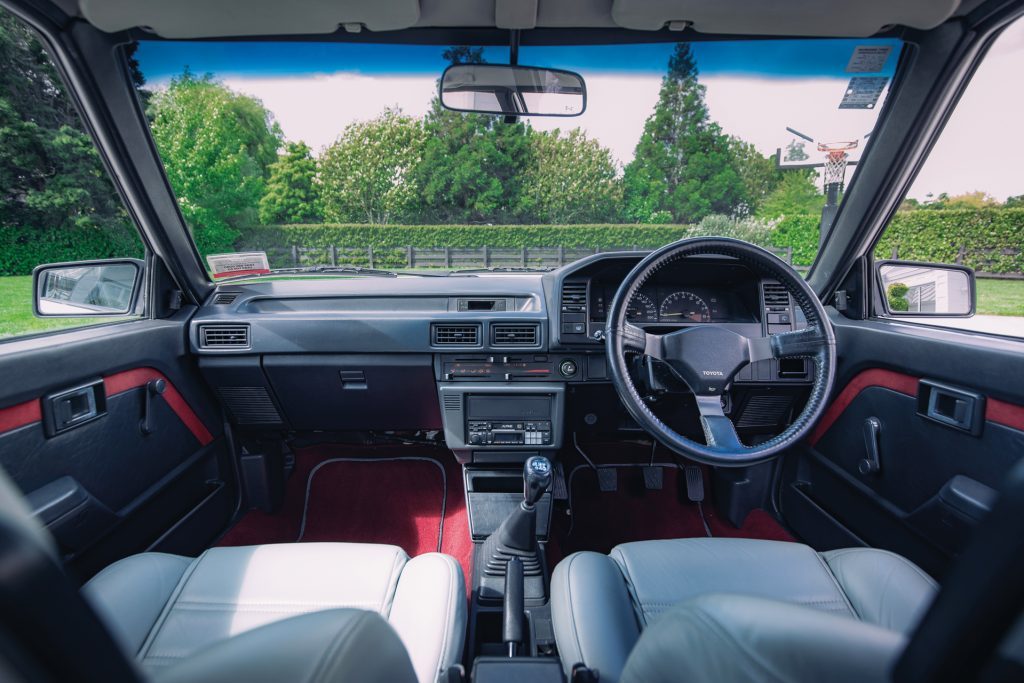
Inside, the Corolla featured a special trim package, meshing well with its standard-issue interior plastics. With Jan Beck handling the interior design, the GT received leather trim on its FX-GT derived, heavily-bolstered sports seats. Red carpets, door inserts and seatbelts added an air of speed. There was also the iconic leather steering wheel, and a tacho that ended at 9000rpm.
The high spec level equated to an expensive car. Retail pricing on the GT Corollas was in the mid-high $30k mark, which resulted in lower production numbers. Evidently 382 hatches left the showroom, alongside 183 of the larger five-door GT liftbacks. The latter debuted in 1986.
The drive experience is heavily defined by those interior additions. Its seats are relatively soft by modern standards. They cosset the driver not with the precision and tautness of a modern race-inspired unit, but rather the security of a welcoming hug. The steering wheel is sublime, with a chunkiness, solidity and simplicity that screams “You’re in 1985 now young man!”
With its relatively low kerb weight, the 4A-GE offers performance best described as ‘effervescent.’ The iconic four-pot is a rev-happy unit, although thanks to the TVIS system the torque curve does feel fairly broad. No, it’s not a Hilux in that regard but the twin-cam pulls cleanly throughout the lower range. The intake butterflies open up at just over 4000rpm and the thing keeps on going with induction noise theatre all the way to its redline.
This is where the 4A-GE thrives. Its five-speed shifts slickly enough with a slightly notchy, long throw action. But it keeps the jewel-like engine in its fun zone. It’s an especially engaging unit to punt through a set of twisties. Meantime, the Amon-honed suspension keeps all four 185-section tyres glued to the tarmac.
Handling is primarily understeery, of course. It’s said that Amon (and Toyota, we’d guess) preferred a ‘safer’ chassis calibration, marked by a ride that errs on the softer side for a sporty candidate. That said, as the front pitches into a corner under gentle braking, it’s not hard to imagine the GT waggling an inside wheel in the air.
With no power assistance, the steering is geared a little less direct than some. It is still weighted well enough that the GT isn’t a chore to drive. Naturally it’s an easy car to place on the road. In 1985 we hadn’t yet embraced girthy A-pillars and high belt lines, so visibility is superb from the leather throne. It’s a bit of an iconic driving experience, the early hot hatch, and one that became a local cult classic.
For one owner then, the GT left enough of a mark that she just had to get another! The car on these pages is owned by Tiff Wood. She recalls that as a 20-year-old, a good friend who owned a GT inspired her to track down her own.
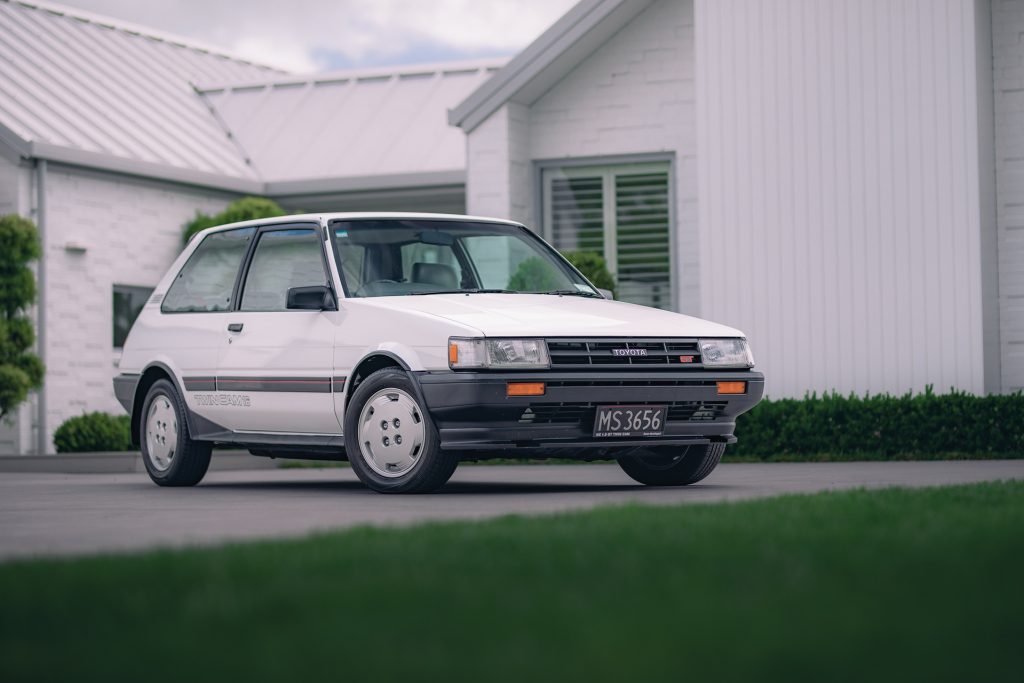
“We just used to cruise around in tandem,” she laughs. “His was that light blue, and mine was white. That’s where my love for it came from. I remember I had to save so, so hard to get it though. It was such an expensive car for me!” Three years later she’d sell it, albeit at a bit of a loss.
Nostalgia’s a powerful drug and as the years passed, Tiff always pined for another GT. Eventually the perfect car popped up in Ashburton. It matched the exact spec Tiff had originally.
The first call to the seller revealed the car was sold. However, he called back a few weeks later saying the deal fell through. After plenty of correspondence Tiff hit the button and bought it sight unseen!
“Corollas never break down, but this one did,” laughs Tiff of the drive home. Thankfully it was just an ignition coil. Following repair, Tiff was able to get behind the wheel and transport herself back to her younger days, rowing through the gears and sending the tacho throughout its range.
With 296,000km on the clock, Tiff’s Corolla’s had the benefit of a splash of paint and a treatment on the original leather to keep it looking fresh, amongst other tidy-ups. An outing at Ellerslie Concours saw the car receive plenty of nostalgic attention from young and old alike, cementing the cult status of the Kiwi Corolla GT.
Toyota really did make the hot hatch revolution arrive in New Zealand, thanks to some local know-how and international engineering. And 2025 marks the 40th anniversary of the Corolla GT, with a gathering slated for the Toyota Gazoo Racing Festival in April. If you own a NZGT, we’ll see you there!



